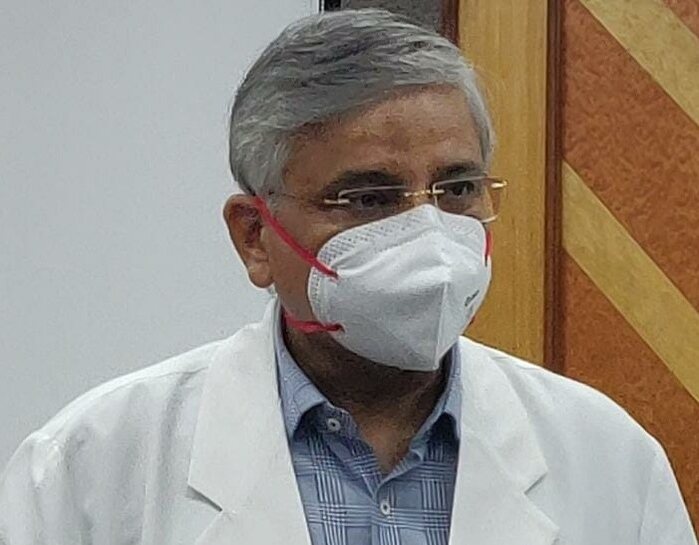With the second surge of Covid-19 pandemic continuing, to put to rest the anxieties and questions of the suffering people, four leading doctors –Randeep Guleria, Director of All India Institute of Medical Sciences, Naresh Trehan, Chairman and Managing Director, Medanta, Navneet Wig, Head of Department of Medicines, AIIMS and Sunil Kumar, Director General Health Services came together yesterday.
Shortage of oxygen and medicines
Getting to the vital concern prevailing currently about the oxygen and medicine shortage, Dr Guleria said: “Hoarding of injections like Remdesivir and oxygen in homes is creating a panic and this hoarding is causing a shortage of these medicines. Covid-19 is mild infection and 85-90 per cent people will only suffer from cold, fever, sore throat and bodyache. Only symptomatic treatment at home is enough to ride through these infections and there is no need for oxygen or Remdesivir.”
He went on to add that it was only 10 to 15 per cent of the patients, severely affected who need oxygen, Remdesivir or plasma etc, while less than five per cent patients need ventilators or intensive care.
No need to panic. 85 to 90 % of people witnessing normal symptoms like fever, cold, body ache, cough & in these cases, one doesn't need Remdesivir or other large no. of medicines: AIIMS Director Dr Randeep Guleria@MIB_India @MoHFW_INDIA@mygovindia @PIB_India @drharshvardhan pic.twitter.com/MKKrpXRHQG
— DD News (@DDNewslive) April 25, 2021
Making a categorical clarification, Dr. Guleria said, that Remdesivir neither reduces the hospital stay nor saves lives. It may reduce the hospital stay in moderate to severe cases while if administered in mild cases it can complicate matters. Remdesivir is no magic bullet and it is used in hospitals for moderate to severe cases.
On the issue of oxygen demand, Dr Trehan stated that the demand for medical oxygen has suddenly risen in the current crisis and manufacturing facilities are stretched for supplies. Making a pertinent point he said that Indian industries however have the capacity but lack cryo-transportation and the Government is actively working on this and the situation will be under control in the next five to seven days.
Dr. Guleria pointed out that people who have oxygen saturation above 94 do not need oxygen as increase in oxygen saturation beyond this level would not increase oxygen in blood. But with people with above 94 oxygen saturation using oxygen causes shortage in supply thereby reducing access to oxygen for serious cases.
Precautions and steps to be followed
Highlighting the steps to be immediately taken once the RT-PCR test is positive, Dr Naresh Trehan said that people should first contact a local or family doctor. As all the doctors are fully aware of the protocol to be adhered to, they will immediately recommend the course of medication to be followed by the patients, who must instantly isolated themselves.
He also asked people to do yoga and pranayam which are helpful in maintaining lung health and added that Pronation is also helpful.
Dr. Trehan reiterated the importance of double masking, distancing and hand hygiene and said the mask should seal the air passage around the nose and mouth for proper protection. Also he suggested staying away from crowded places.
Preparedness and healthcare workers
Addressing the issue of preparedness by the Government to mitigate the situation, Dr Kumar remarked that from no preparedness last year when Covid-19 arrived, the Government had ramped up capacity to a unique level very soon. Over 2500 laboratories had been created where only one existed before the pandemic.
“We increased our testing capability to lakhs of tests per day, ramped up tracking and contact tracing and manufacturing of PPE kits et al,” he said. Stressing on the importance of vaccinatgion, he said there are negligible side effects of the vaccines and that vaccines and COVID-appropriate behaviour together can break the chain of transmission.
Making a vital point, Dr Navneet said that we need to save our healthcare workers who will in-turn save our patients. “To save our healthcare workers we need to break the chain and reduce the number of infections. To break the chain is a responsibility of all sections of society but foremost it is the responsibility of the people to undertake Covid-appropriate behaviour.”




















